Gluten Free Tea Biscuits are a great way to start the day, perhaps with eggs, fruit, and coffee. These can be made dairy free and with or without raisins, as you wish. Whip them up in half an hour!
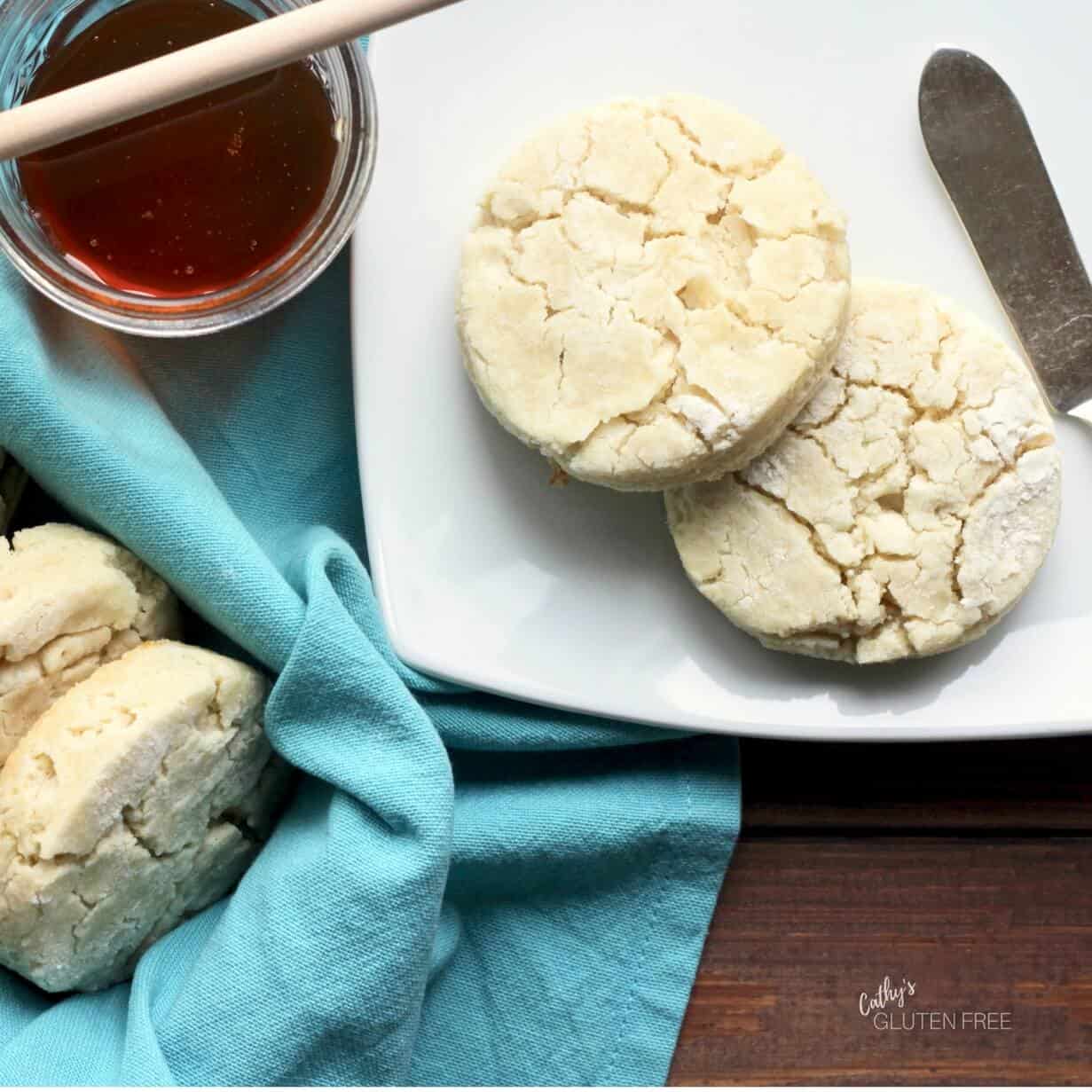
Jump to:
On the rare occasion when my husband and I have the opportunity for a leisurely breakfast at home, or we’ve had overnight guests who can linger in the morning, we enjoy a “special” breakfast. Rather than the usual granola or smoothie, our special breakfast might be pancakes with maple syrup, omelette, frittata, or breakfast sausage with fried eggs and these tea biscuits. Then we enjoy finishing it off with a nice cup of coffee.
Raisins are Optional
I’ve worked hard to get as close as I can to replicating homemade tea biscuits from before my gluten free days. Charlie likes them with raisins, so I try to remember to include them. You may add or delete them as you wish.
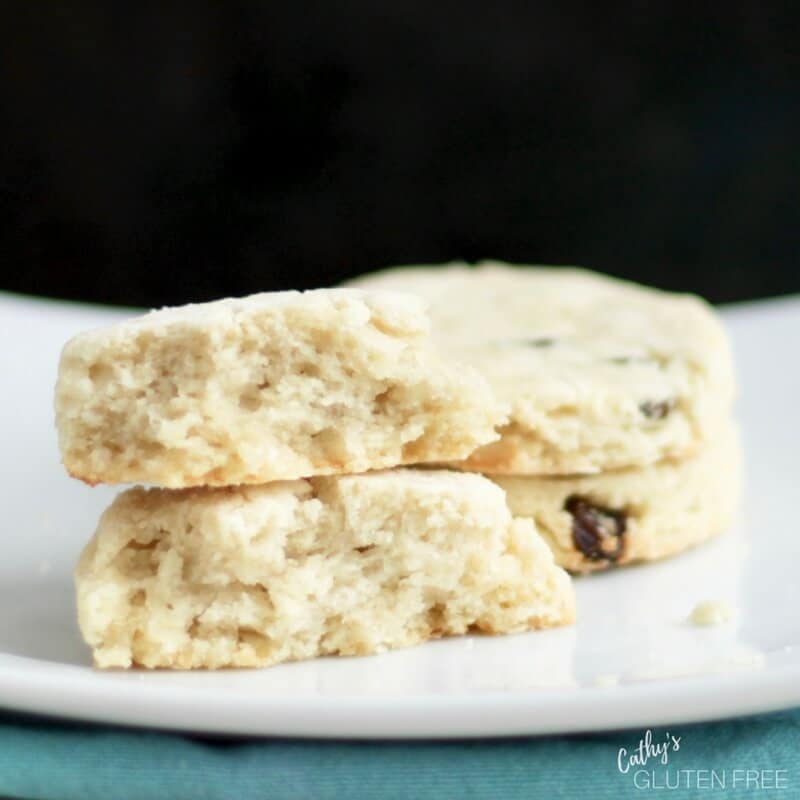
Dairy Free Gluten Free Tea Biscuits
If you need to be dairy-free, you can substitute the butter in this recipe with lard. The recipe will turn out fine, but butter adds a nice flavour if you can have it.
Tea Biscuit Topper
Top these tea biscuits as you wish. I’m very glad to be seeing more lower-sugar “jam” recipes lately like this Strawberry Chia Jam or jams that use natural sugars like this Easy Raspberry Jam Recipe. We enjoy raw honey with warm tea biscuits fresh from the oven. Nut butters are probably the best sugar-free option with tea biscuits. Of course, they're also great plain with soft, runny eggs!
Recipe FAQ's
Biscuits are usually hard and flat, not puffy. They may be served with sweet or savoury foods. Tea biscuits rise up taller. They're lighter, flaky, and often served with jam, tea, or coffee.
There are a couple of reasons why your tea biscuits might not rise. Perhaps there is not enough liquid in the batter. Gluten free batters usually need to be moister than wheat ones.
Or, it might be that you're not using enough baking powder. Gluten free baking generally requires more rising agent than other recipes do. I recommend following a recipe that has been specifically developed to be gluten free, rather than using a regular recipe and just replacing the wheat flour with a gluten free blend.
Butter should be chilled before you add it to a pastry flour mixture for cutting in. Chop up the butter into large chunks. Then, use a pastry blender to cut through it into the flour mixture repeatedly until the butter is about the size of peas, coated in flour.
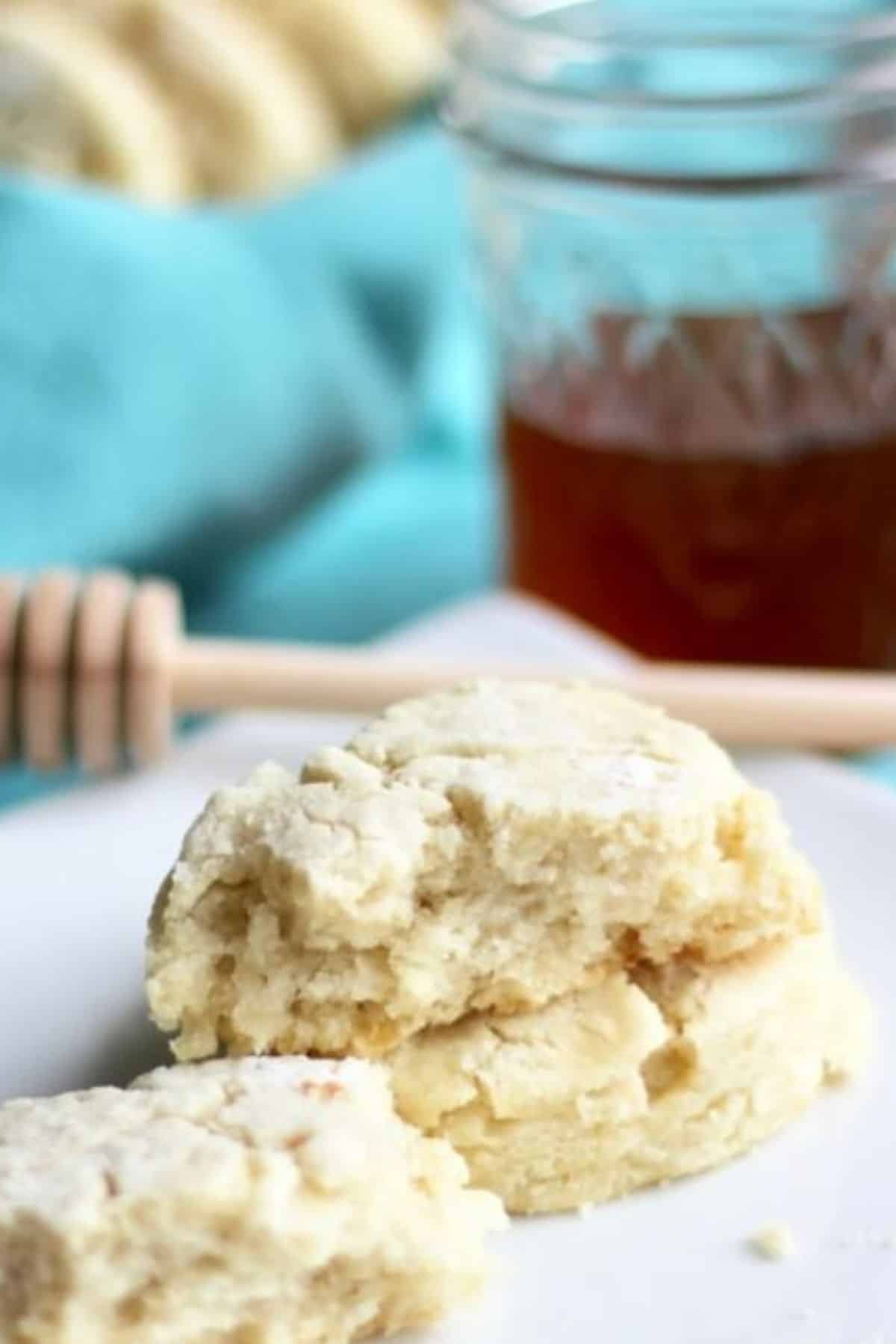
Storage
Tea biscuits are best when they're fresh. If you have leftovers, store them in an airtight container in the refrigerator.
These biscuits also freeze well. Allow a few hours to thaw them when you are ready to eat them.
Gluten Free Drop Biscuits
If you'd rather not be rolling and cutting, try Gluten Free Drop Biscuits.
Video
Watch me make the raisin option of the biscuits, including cutting in the butter, in this little video:
More Great Recipes to Love!
Recipe
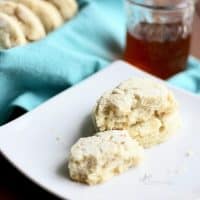
Ingredients
- 1 cup arrowroot flour
- 1 cup almond flour
- ½ cup white rice flour
- 1 tablespoon raw sugar
- 2 teaspoons baking powder
- ½ teaspoon sea salt
- ¼ cup cold butter or lard, for dairy free
- 1 egg
- ½ cup coconut milk from a carton
- ¾ cup raisins optional
Instructions
- Preheat oven to 350°F (177°C).
- In a large mixing bowl, whisk together the flours, sugar, baking powder, and salt.
- Using a pastry blender, cut the butter into the dry mixture until it is about the size of small peas.
- In a small mixing bowl, whisk the egg and milk together. Stir this mixture into the dry ingredients just until they are combined. Add the raisins, if you are using them.
- On a floured surface with a floured rolling pin, roll out the dough until it is about ½ inch (1.27cm) thick. (Use any of the flours that are in the recipe. I usually use rice flour for this.) Cut with sharp cookie cutter about 2 inches (5.08cm) in diameter and place ¼ inch (0.635cm) apart onto a greased or parchment-lined baking sheet.
- Bake for 15 to 18 minutes until biscuits are just starting to brown around the edges at the bottom.


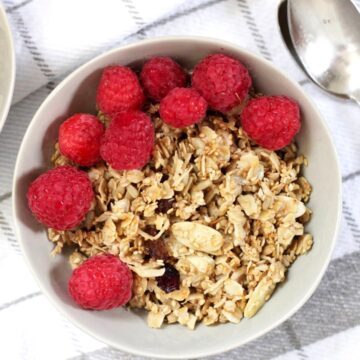
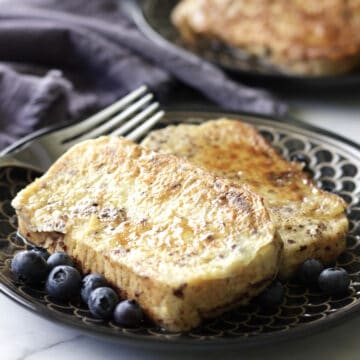
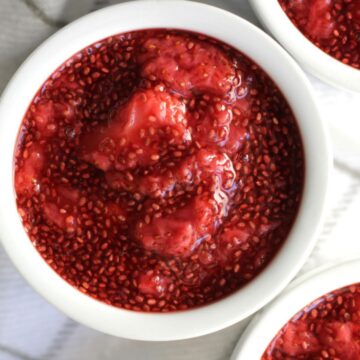

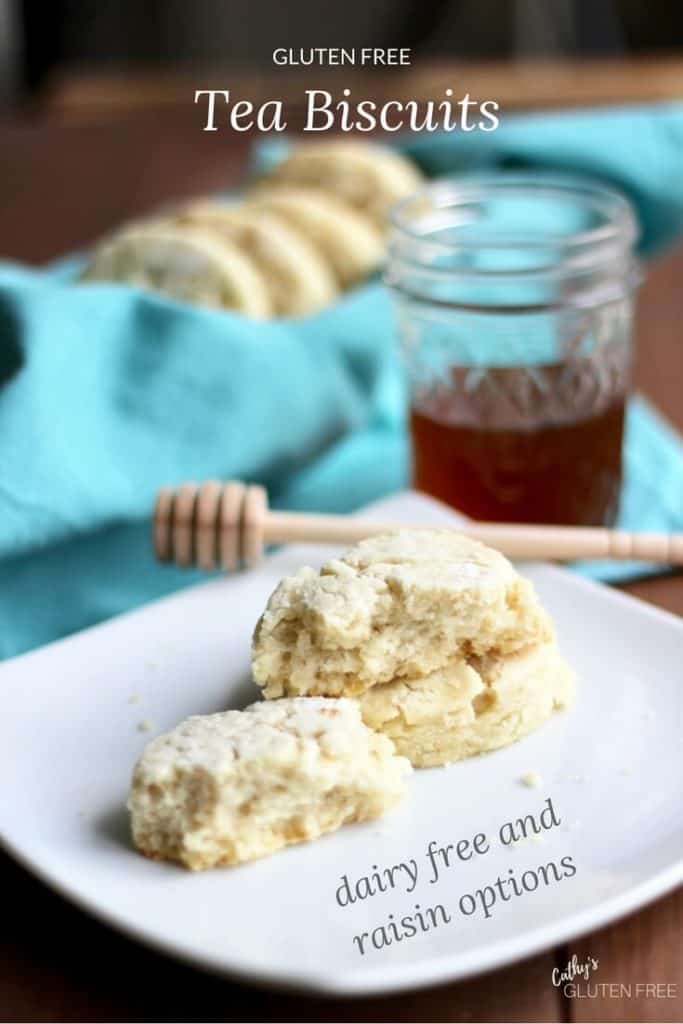
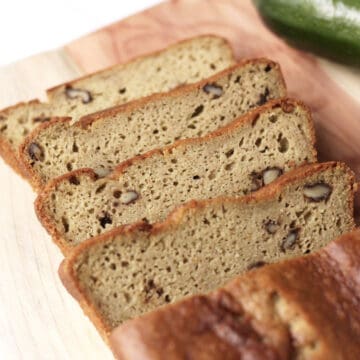
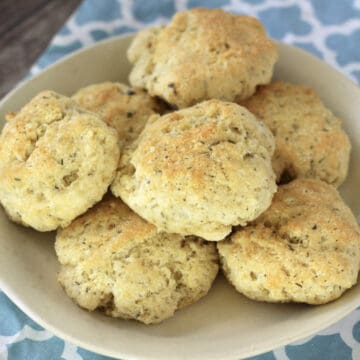
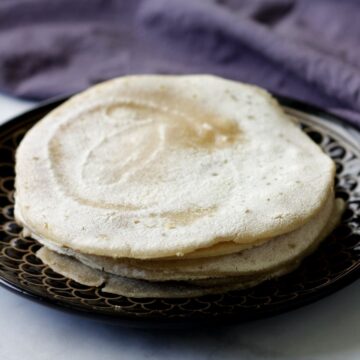
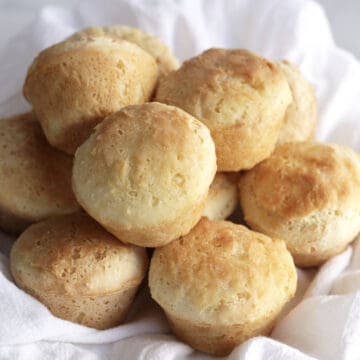
Tabitha Stevens says
YUM! I used to adore tea biscuits! A local diner i worked at used to have the best tea biscuits and I sadly had to give them up when I went gluten free. Can't wait to try yours! Perhaps they will taste just as good. Thanks for your recipes.
Cathy says
Thank you for reaching out to me, Tabitha. I hope you love the tea biscuits as much as we do!
Elizabeth says
Thanks to you and your nutritional delicious recipes I’m enjoying being gluten and dairy free.
Cathy says
I'm so happy to read this! Do let me know what new recipes you would like to see.
Kiki Johnson says
What a great, easy recipe! I have never baked with arrowroot flour, but your biscuits look so delicious that I think I should try! I love the crinkled look of them!
Cathy says
I hope you enjoy the biscuits, too!
Leslie says
Yum! I love those mornings where you have time to linger over breakfast. These look great, Cathy!
Cathy says
Thanks, Leslie! Yes, those leisurely mornings are too few and far between.
Sean@Diversivore says
I continue to be impressed by your gluten-free creations! I've worked with a fair number of different flour types over the years but I've not tried arrowroot yet. It's always been an ingredient of interest to me though. Do you find that it has a fairly neutral flavour, or does it contribute any character of its own to the recipe? Regardless, they look like a wonderful tea-time treat to me!
Cathy says
I find that arrowroot flour has a neutral flavour. That's one of the reasons I like it. These biscuits definitely play a supporting role to whatever you'd like to put on them. Thanks for stopping by, Sean!
Elaine @ Flavour and Savour says
These look delicious! I'll bet they'd be good with herbs, too, if I eliminate the sugar and make them a savoury biscuit. Must try! Pinning.
Cathy says
I think they would be great with herbs! We can make all sorts of variations!